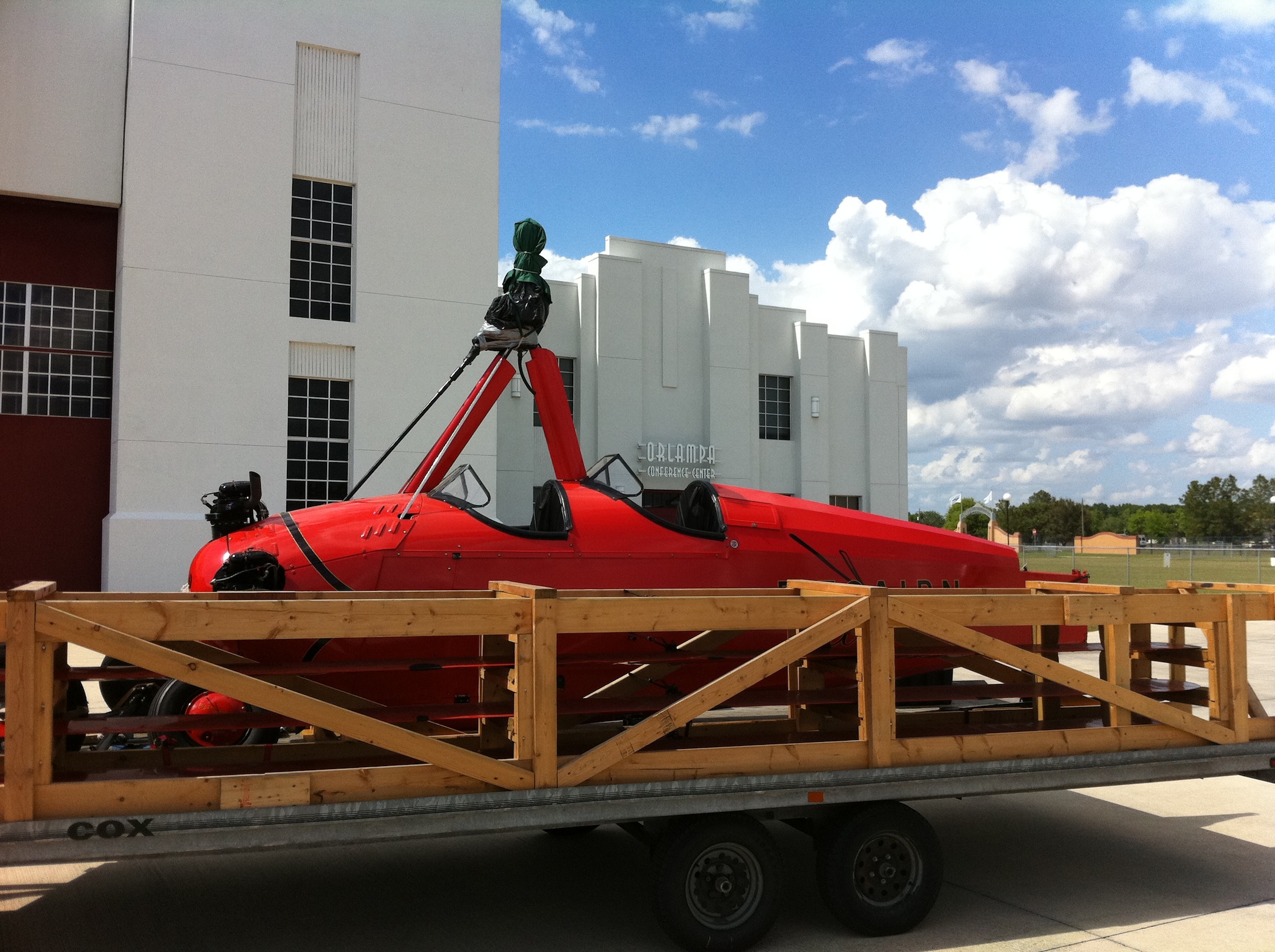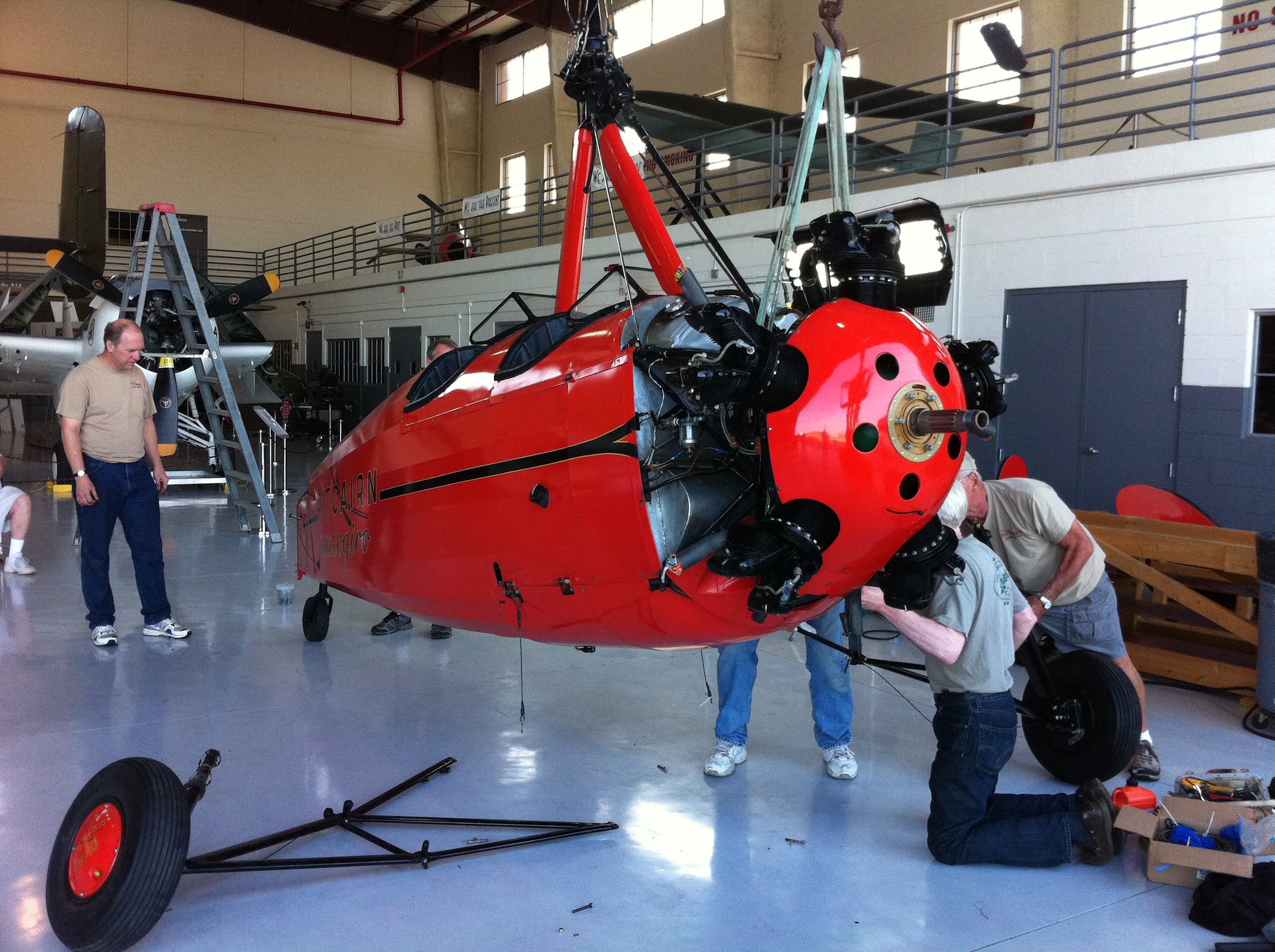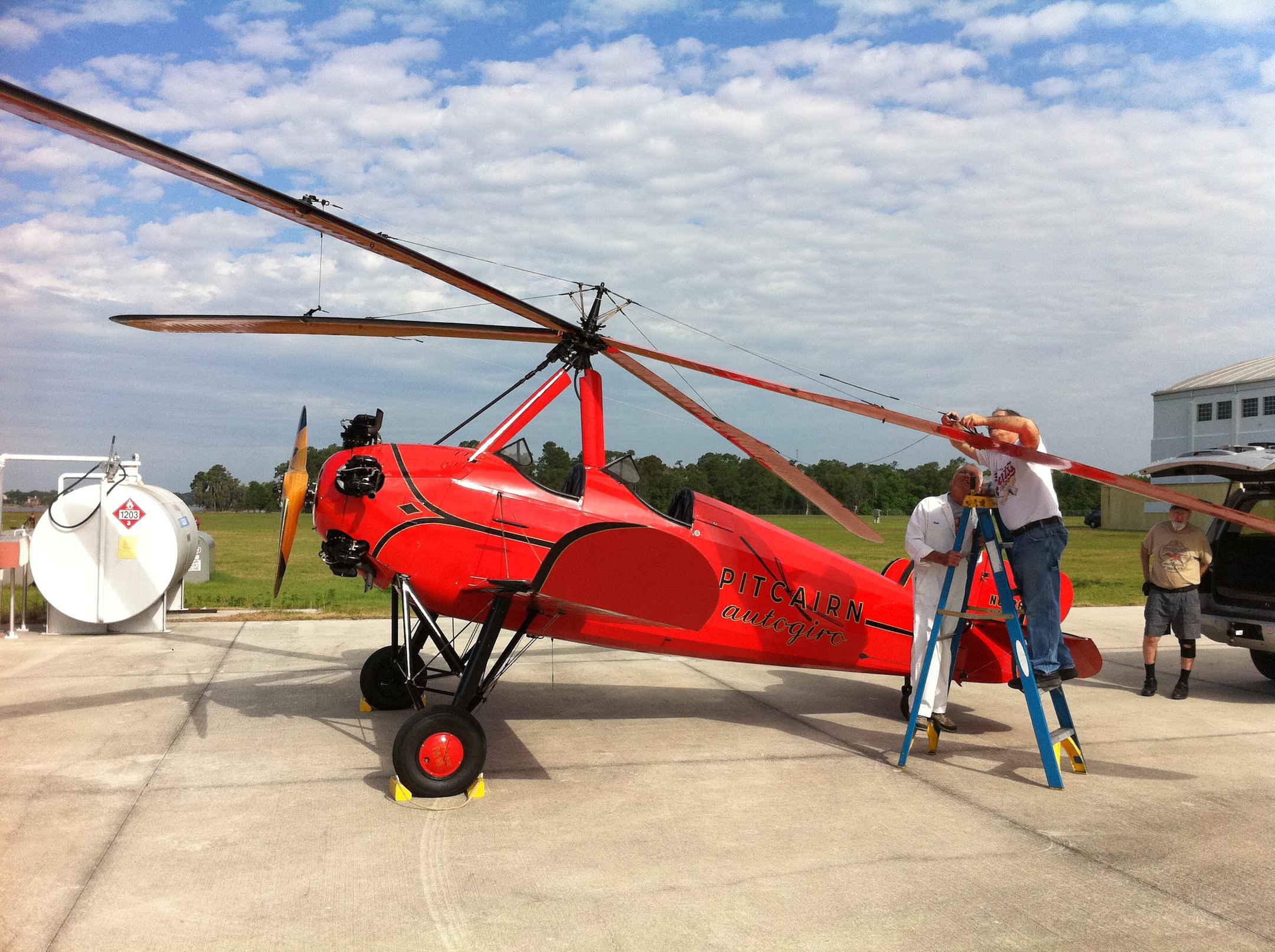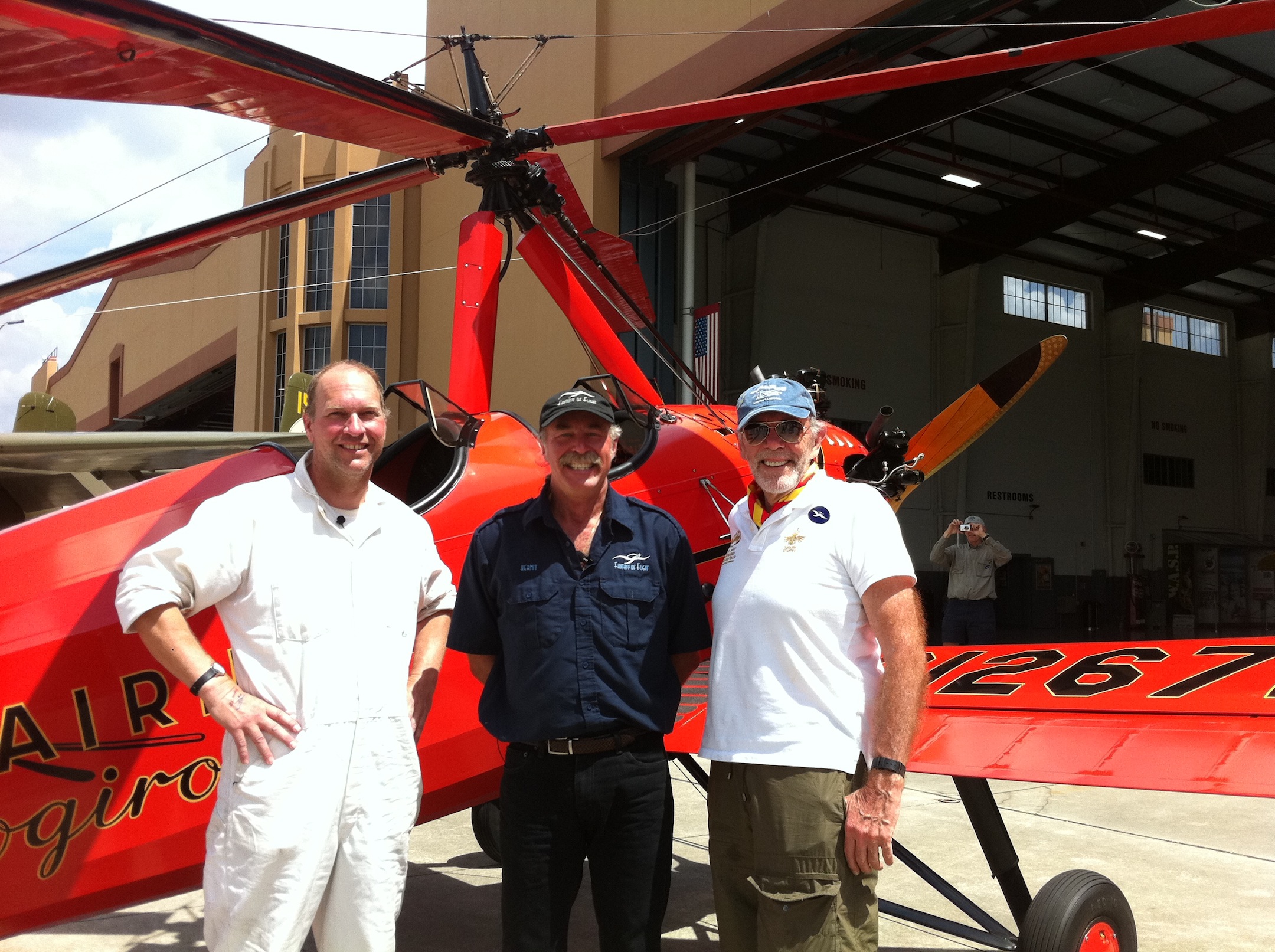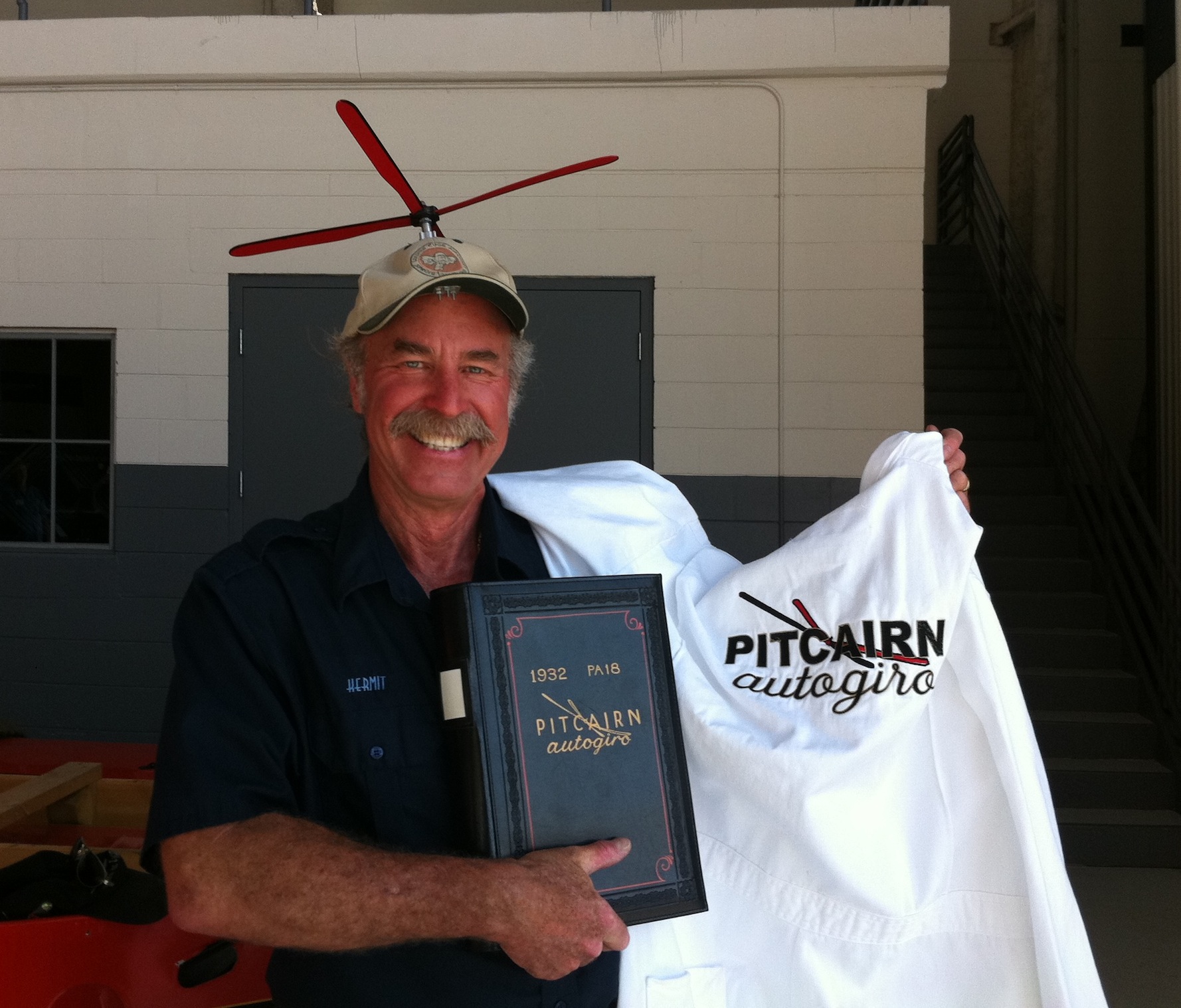Our 1932 Pitcairn Pa-18 Autogiro has finally arrived from a Museum in Ohio and is now on display at Fantasy of Flight! It’s powered by a 90 hp Kinner engine and has a maximum speed of about 95 mph.
I had seen this aircraft first at Oshkosh several years ago and then after the Sun ‘n Fun Fly-In when it was flown over and disassembled in our Fantasy of Flight hangars before heading back north. I remember mentioning to the owners that if they ever wanted to sell it to give me a call. Well, that day came last summer and we quickly cut a deal!
Once it was all put together, it was time for the final inspections, paperwork, checking the oil, and fueling.
Andrew King, who had been the only person flying it and who used to work for me in Miami, went up for a twenty-minute test-flight and put it through its paces. It was the first time I had ever seen an original autogiros fly and it is surely a sight to behold! Here’s a link to a video clip of Andrew’s test-flight.
After Andrew landed, we all looked it over carefully and put some more fuel in it. I jumped in the front passenger seat and, after Andrew took-off, he handed me the flight controls. It was a bit different than what I expected and tended to jump around a bit. When I asked Andrew this, he said it had been smoother early on and that maybe there was a blade out of track.
Here’s a link to a video clip of my view from the front seat. This was all happening during the Sun ‘n Fun Splash-In at Fantasy of Flight and you can see the activity on the lakeshore as I pan over that way with the camera.
Once we landed, we swapped seats and it was my turn! This was a first for me and a first for Andrew, as he had only flown from the back where MOST OF THE CONTROLS WERE! Talk about trust!
I taxied down to the end of the runway, spooled the rotor up to about 90 rpm, unset the parking brake, disconnected the clutch that spins of the rotor so it will free-wheel, added the power, and off we went! It needs to move forward on the runway a bit like an airplane to get the rotor blade speed up to about 125 rpm where it lifts off.
We climbed up and did some maneuvers, one of which I thought would be a bit disconcerting for your average airplane pilot. I slowed down to zero airspeed, held the stick back all the way, and came down vertically like a parachute! The rotor continues to spin because of autorotation! Then when you kick in the rudder, the wing drops and it starts to spin! Whooa!
After some more airwork I landed in about 40 feet and then did two more take-off’s and landings to get comfortable. While I have a helicopter rating and would feel perfectly comfortable flying it, the FAA says I still need to get an autogiro rating. Talk about incentive!
The whole experience was an amazing flashback into aviation history and I’m excited about getting my rating and start flying it. Of course, after we track the blades!
As part of the deal, they surprised me with a book on its history and restoration, a flying suit like Andrew had been wearing, and my very own autogiro hat! Hey, maybe I can practice running around the ramp with just the hat! :-)
I think it will make a great future character for my illustrated children’s book series as Pretty Polly Pitcairn and expect that she will probably pair up with my other autogiro Juan de la Cierva!
It now seems I have some incentive to get Juan, a Cierva C-30, down from the rafters and restored! Come on out and check them out!
Kermit
